The views expressed in our content reflect individual perspectives and do not represent the authoritative views of the Baha'i Faith.
The Bible invites people to enter the Day of Judgment through the “strait gate”—which means tight, restricted and difficult—not “straight,” but “strait:”
Enter ye in at the strait gate: for wide is the gate, and broad is the way, that leadeth to destruction, and many there be which go in thereat: Because strait is the gate, and narrow is the way, which leadeth unto life, and few there be that find it. – Mathew 7:13.
In its archaic usage, the word “strait,” the source of the phrase “strait and narrow,” means “strict.” You’ve probably seen this term used to describe a narrow and sometimes treacherous ocean passage, often called “dire straits,” through places like the Strait of Gibraltar or the Strait of Hormuz. Sea captains used to view passage through such straits, with their unpredictable tides, currents and storms, as the ultimate test of their skill and courage.
This Biblical metaphor, then, describes the passage to heaven as narrow and never easy.
Typically, in the days of Christ, the “strait gate” also referred to the Mercy Gate, or Golden Gate, or the Beautiful Gate—the easternmost gate of the holy city of Jerusalem, at the center of the eastern side of the Temple Mount, facing the Mount of Olives. You can still see Jerusalem’s Eastern gate—although it’s been sealed since Muslims under Ottoman Sultan Suleiman the Magnificent blocked it in 1541, with the specific intent of preventing the Jewish Messiah’s entrance, prophesied in the Old Testament.
Historically, ancient walled cities like Jerusalem had two kinds of gates: strait and wide. The wide gates of Jerusalem were meant for the masses—the Fish Gate, the Dung Gate, the Tanner’s Gate, the Excavator’s Gate, etc. The narrow or strait gates of the city were reserved for dignitaries, nobility and kings—Herod’s Gate, the Lion’s Gate, etc.
So when Christ advised his followers to “enter ye in at the strait gate” “because strait is the gate, and narrow is the way, which leadeth unto life …”, he used a metaphor that people of the period could relate to and understand. He wanted them to become noble in their spiritual condition, aspiring to high thoughts and deeds. He didn’t intend to frighten them with apocalyptic threats—instead, he wanted to uplift them. You can see the symbolism here, if you think beyond the literal interpretations.
The Baha’i teachings, expressed here in the writings of the Bab, expand on Christ’s message:
Praise be to God that He hath enabled us to become cognizant of Him Whom God shall make manifest in the Day of Resurrection, so that we may derive benefit from the fruit of our existence and be not deprived of attaining the presence of God. For indeed this is the object of our creation and the sole purpose underlying every virtuous deed we may perform. … If thou embracest the Truth, everything good and seemly shall be set down for thee in the Book of God, and by virtue of this thou wilt rejoice in the all-highest Paradise until the following Resurrection.
Consider with due attention, for the path is very strait, even while it is more spacious than the heavens and the earth and what is between them. – The Bab, Selections from the Writings of the Bab, p. 109.
So for Baha’is, the Day of Judgment and the Day of Resurrection truly occur during the periods of history when a new messenger of God appears, offering humanity a spiritual springtime:
There shall be no resurrection of the day, in the sense of the coming forth from the physical graves.
Rather, the resurrection of all shall occur (in the form of) those that are living in that age …. There is no denying that upon the Day of Resurrection, each and every thing shall be raised to life before God, may he be praised and glorified. For God shall originate that creation and then cause it to return. He has decreed the creation of all things, and he shall raise them to life again. – The Bab, The Persian Bayan, Vahid 2, Bab 7 (provisional translation).
In other words, the Baha’i teachings say that Judgment Day and the Day of Resurrection mean religion has been fulfilled:
The stage of perfection of everything is reached when its resurrection occurreth. – The Bab, Selections from the Writings of the Bab, p. 107.
This fulfillment of religion, and its progressive continuance, carry out the Creator’s promise to humanity that we will never be left without moral and spiritual guidance:
If we are of those who perceive, we realize that the bounties of God manifest themselves continuously, even as the rays of the sun unceasingly emanate from the solar center. The phenomenal world through the resplendent effulgence of the sun is radiant and bright. In the same way the realm of hearts and spirits is illumined and resuscitated through the shining rays of the Sun of Reality and the bounties of the love of God. Thereby the world of existence, the kingdom of hearts and spirits, is ever quickened into life. Were it not for the love of God, hearts would be inanimate, spirits would wither, and the reality of man would be bereft of the everlasting bestowals. – Abdu’l-Baha, The Promulgation of Universal Peace, p. 256.







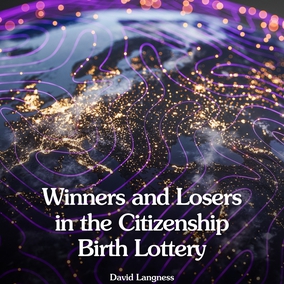
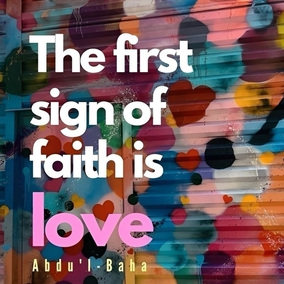
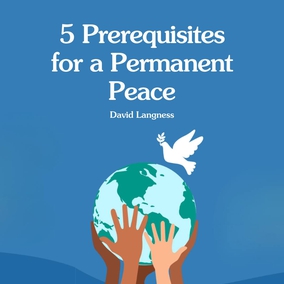

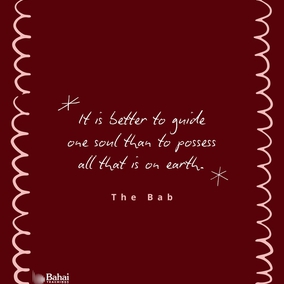

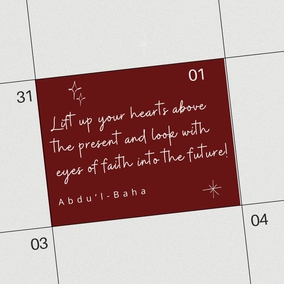


Comments
Sign in or create an account
Continue with Googleor